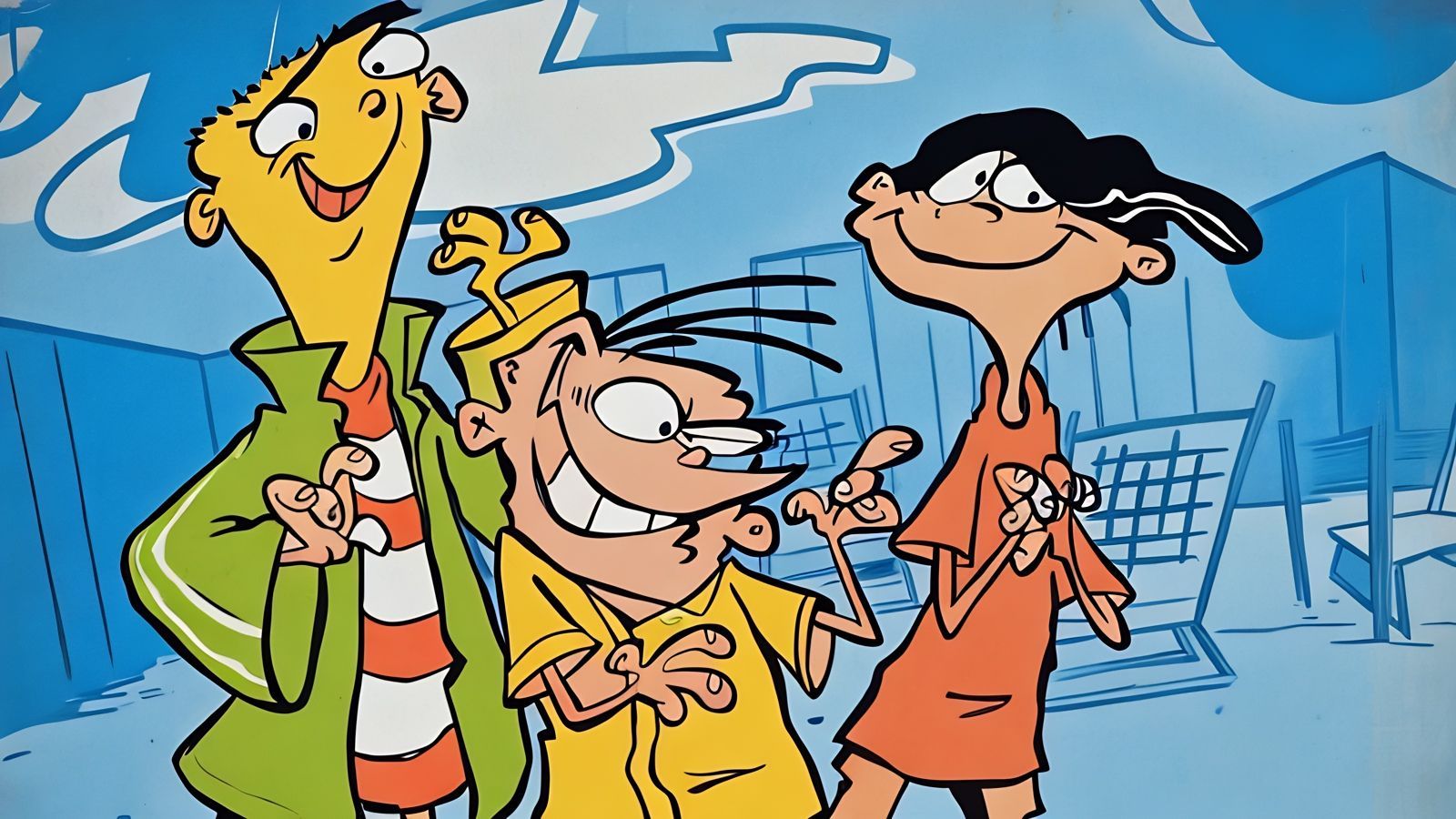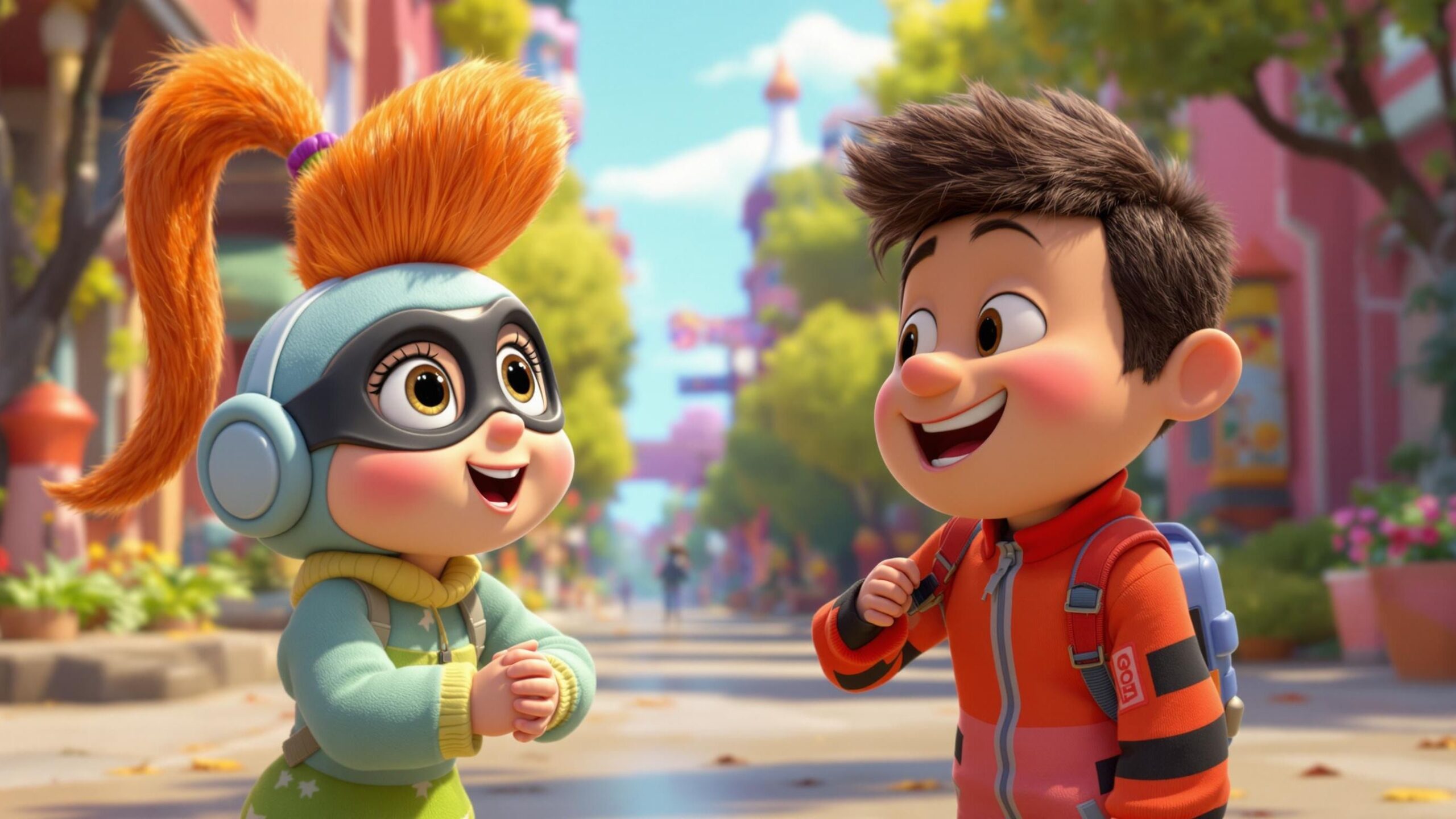The Pink Pup in the Middle of Nowhere
Before we ever learned what fear was in the real world, many of us learned it in the dusty, isolated plains of Nowhere, Kansas. And who was our guide through every terrifying, twisted turn? None other than a shrieking, shaking, bug-eyed pink dog named Courage. “Courage the Cowardly Dog” was unlike any other cartoon on air during its time. While shows like “The Powerpuff Girls” and “Johnny Bravo” were busy flexing their comedy or action chops, “Courage” was out here tackling existential dread, supernatural horrors, and inner demons—with absurdity, artistry, and a surprising amount of heart.
But beneath all the monster-of-the-week madness and Eustace’s growling “Stupid dog!” insults, Courage was telling us something profound. It was quietly teaching an entire generation how to face fear, even if your knees were knocking and your only weapon was a rubber chicken. This wasn’t just a cartoon. It was a masterclass in bravery, wrapped in slapstick and ghostly silhouettes.
Fear Comes in Many (Weird) Forms
Let’s get one thing straight: “Courage the Cowardly Dog” had some of the creepiest villains to ever appear in a children’s cartoon. Remember Freaky Fred? Or Katz? Or the single most unnerving computer voice that would sarcastically roast Courage while solving life-threatening puzzles?
The fear in this show was rarely simple. It wasn’t just about jump scares or monsters. Sometimes, it was the fear of losing someone you love, or the fear of not being enough. It was the dread of being alone in a world that doesn’t make sense. Courage’s fear was layered and symbolic. And isn’t that just like real life?
By embodying fear in all its weird, grotesque, and sometimes hilarious forms, the show gave us the tools to name it, laugh at it, and inch toward it with wobbly knees and a determined heart.
Bravery Isn’t the Absence of Fear—It’s Action Despite It
The show’s name itself is a lesson. Courage isn’t fearless. In fact, he’s constantly scared. He yells, he trembles, he gasps, and he often panics in the most dramatic ways possible. But what does he do every single time? He keeps going.
That’s what stuck with us. Bravery was never about being the strongest or the calmest. It was about doing the scary thing anyway, especially when someone you love depends on you. Courage showed us that you can be terrified and still be the hero. He would do literally anything—travel through time, battle mummies, wrestle space ducks—for Muriel. And that kind of love-fueled courage is what made his fear so relatable and his actions so inspiring.
Muriel and Eustace: Love, Loyalty, and the Price of Comfort Zones
Muriel, with her Scottish accent and eternal kindness, was Courage’s safe place. She represented warmth, understanding, and the reason Courage always found the strength to face terror head-on. Eustace, on the other hand, was the cantankerous, emotionally closed-off farmer who rarely showed love but still somehow completed the dysfunctional family.
These two characters taught us about the motivations behind courage. We push past fear for others. We endure the terrifying unknowns not because we’re thrill-seekers but because there’s something—or someone—worth protecting on the other side.
Courage didn’t stay in his comfort zone. He couldn’t afford to. And maybe that was the lesson all along: your comfort zone won’t always protect you. But love? Loyalty? A mission bigger than yourself? That will give you the strength to walk through any haunted cornfield life throws at you.
Fear Is Funny (And That’s Powerful)
“Courage the Cowardly Dog” is often remembered for its spooky atmosphere, but it was also hilarious. The exaggerated expressions, the bizarre villains, the sarcastic computer, and Courage’s over-the-top reactions turned many scary moments into laugh-out-loud comedy. And there’s power in that.
Humor doesn’t erase fear, but it disarms it. It gives us a moment of control. When we can laugh at the absurdity of a giant roach with a French accent trying to steal Muriel’s cookies, we take away some of its power. The show used that tactic constantly throwing in a dance number or an unexpected punchline right after a chilling moment. It showed us that fear doesn’t have to own us. Sometimes, you can giggle your way right through the haunted house.
The Visual Language of Anxiety
Beyond characters and plot, “Courage” was visually brilliant. Its use of surreal animation, distorted shapes, clashing styles, and creepy close-ups captured something deeper than horror—it captured anxiety. That feeling of not understanding what’s happening, of being small in a giant world filled with incomprehensible rules. Sound familiar?
Whether you were a kid worrying about school or an adult dealing with bills and deadlines, Courage’s world somehow mirrored your own. His fear was cartoonishly exaggerated, but the emotion was real. And in every scratchy frame, every scream, and every brave step forward, the show let us see ourselves in a pink dog trying to hold it all together.
You Don’t Need Powers to Be a Hero
Courage didn’t have laser vision or super strength. He wasn’t rich, didn’t have gadgets, and couldn’t fly. His biggest skill was googling stuff (shoutout to that shady old computer) and trying his best. And still—still—he saved the day. Over and over again.
He wasn’t brave because he had powers. He was brave because he had purpose. Because he chose to act, even when every instinct told him to run. That’s what makes him a hero. And that’s the type of courage all of us can tap into. You don’t need to be extraordinary. You just need to care enough to try.
Facing the Unknown, One Episode at a Time
Let’s not forget: Courage’s world was wildly unpredictable. Every episode, something new and strange and potentially deadly happened. There was no pattern, no logic. One week it was a space squid; the next, a cursed slab.
And yet, Courage kept showing up. That resilience—the willingness to face the unknown again and again—is one of the show’s greatest takeaways. Because that’s life, right? You don’t know what tomorrow’s bringing. It could be a blessing, a challenge, or a talking duck in a tuxedo. But if Courage can face it, so can we.
Courage Taught Us to Care
At its heart, “Courage the Cowardly Dog” wasn’t just about surviving fear—it was about empathy. Courage felt deeply. He was scared, yes, but he also cared. That made him act, even when he had every reason not to.
We live in a world where fear is loud. But Courage taught us that love, compassion, and determination can be louder. He reminded us that it’s okay to be scared—and that fear doesn’t disqualify us from being brave. It qualifies us even more.
The Final Lesson: Feel It, Then Fight It
“Courage the Cowardly Dog” never tried to tell kids not to be afraid. It never sugarcoated the world. Instead, it validated fear—and then showed how to move through it. That’s what made it powerful.
In a way, Courage let us know it’s okay to scream, to cry, to feel overwhelmed. But then? You get up. You face the thing. You save your Muriel.
And maybe that’s the biggest lesson of all. Not to be fearless—but to be fear-full and still show up.





